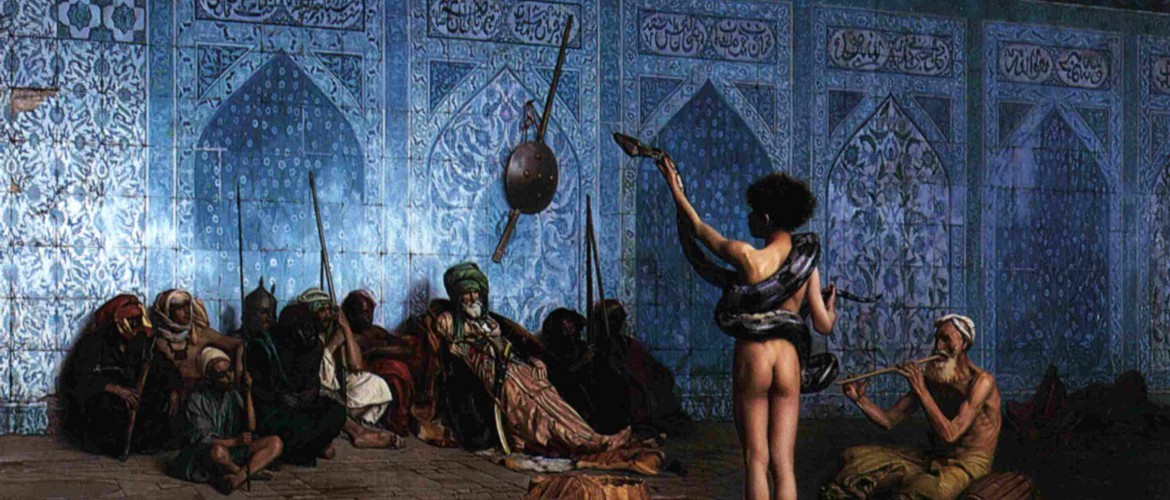This module explores the third pillar in Andrea Smith’s “Three Pillars of White Supremacy”, viz. Orientalism and its association with a perceived threat from the Islamicate world to Christendom, Europe and/or ‘The West’. By Orientalism, we refer to the historical construction of images of the ‘Eastern’ – and especially Islamicate ‘Other’ – by Christian, European and ‘Western’ thinkers, and the utility of such images in the establishment, maintenance, expansion and refinement of European domination of the non-European world.
Even though the Islamicate world was colonized relatively late – the plundering of Bengal by the East India Co. and Napoleon’s invasion of Egypt in 1798 marking key turning points in ‘Western’-Islamicate relations in the 18th century – the origins of Western perceptions of an Islamic threat underpinning and informing such colonial and imperial projects pre-date the formation of the modern/colonial world system in 1492 and, importantly, provide important political and conceptual backgrounds to the constitution of this system.
The module begins with a consideration of some important episodes informing ‘Western’-Islamicate relations including the Crusades and the representation of Islam and Muslims in Western travel and missionary writings etc. in different pre-modern periods (Tomaz Mastnak, Norman Daniel). Particular reference is made to emerging negative characterizations of Saracens, Moors and Turks as threatening to (Western) Christendom, culminating in the ‘background’ provided by the imago Turci (“figure of the Turk”) which informed the terms of the 1550-1551 debate between Sepulveda and Las Casas on the status of the “New World Indians” as to whether they had souls and could be Christianized (Las Casas) or whether they were animals and should either be enslaved or exterminated (Sepulveda). The abiding appeal of the imago Turci in Western Enlightenment discourses (Kant on the Islamicate Orient as an irrational political threat, von Kempelen on the Turk as symbol of the ‘automaton’) and their persistence into the present – for example, Amazon’s Mechanical Turk – is examined using Enrique Dussel’s idea of the ego conquero (conquering subject) as preceding the ego cogito (thinking/reasoning subject) and Edward Said’s seminal work on Orientalism as applied to the machine question by Ayhan Ates and others.
The next part of the module considers emerging critiques of Orientalism among non-Europeans in the 20th century including Anouar Abdel-Malek’s Orientalism in Crisis, Jalal Al-e Ahmad’s Occidentosis: A Plague From the West, Edward Said’s Orientalism, Rana Kabbani’s Europe’s Myths of the Orient: Devise and Rule. It then moves on to look at more recent thinking on the issue including Salman Sayyid’s distinction between strong and weak forms of Orientalism and Hamid Dabashi’s call for a “Post-Orientalism”. The relationship between Orientalism, Islam and Islamism is briefly examined through a consideration of the work of Asaf Hussain, Robert Olson and Jamil Qureshi along with that of Hichem Djait, Yusef Progler and others. The phenomenon of “Black Orientalism” and its critique by Muslim ‘apologists’ is engaged through a consideration of the work of Chancellor Williams, John Henrik Clarke and Henry Louis Gates, Jr. as interpreted by Wesley Muhammad, Ali Mazrui, Sherman Jackson and others. Finally, some ‘Western’ / European critiques of non-European critiques of Orientalism are examined – specifically, Ian Buruma and Avishai Margalit’s Occidentalism: Images of The West and various writings by Alastair Bonnett.
The module concludes with a detailed examination of the phenomenon of Islamophobia, drawing on the work of Salman Sayyid, Abdoolkarim Vakil, Ramon Grosfoguel, Hatem Bazian and others.

